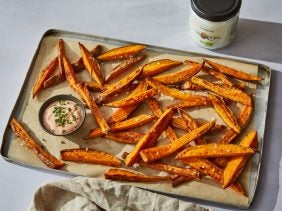Everything You Need to Know About Pumpkin Just in Time for Fall
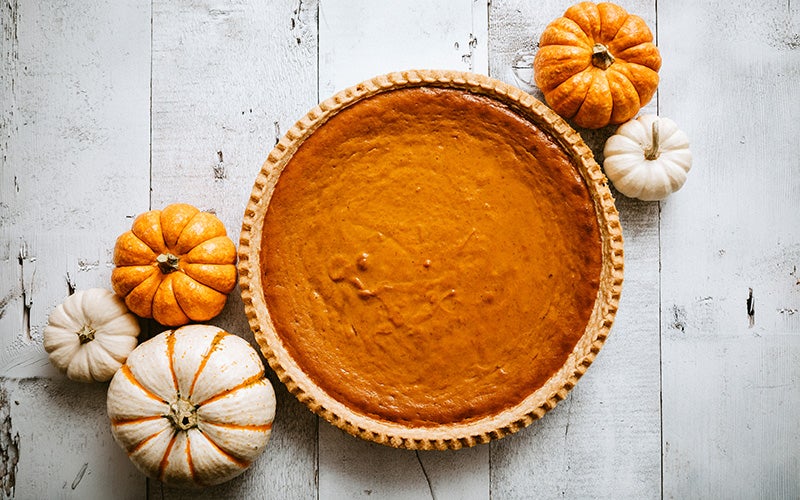 ©foodspring
©foodspring
Even though it’s always a little sad to say goodbye to summer, pumpkin gives us a reason to keep going in fall. Whether pureed into a soup or sliced up for a gratin, there are so many tasty ways to cook with nutritious winter squash of all shapes and sizes. From butternut to red kuri, find out everything you need to know about all the different gourds from the store.
What is Squash?
Pumpkins and all other types of squash are members of the cucurbitaceae plant family. They’re technically considered to be berries because their flesh contains seeds, and they’re closely related to both melon and cucumber. The largest squash documented weighed around several hundred kilograms. Now that’s a lot of pumpkin pie!
Though we may be most familiar with pumpkin, there are actually more than 800 varieties of squash. And while they may technically be considered to be fruit, they’re more commonly used as vegetables because of their earthy, nutty flavors. For example, pumpkin soup and cheesy pumpkin gratin are just a few of the most popular ways to cook with this ingredient. But they can also be baked into plenty of sweet treats, too—like pumpkin pie, cake, and cookies, and cookies, just to name a few.
Where Did Squash Originate and When Is It in Season?
The pumpkin is native to Central and South America, where it has been eaten for thousands of years. European colonizers eventually brought squash to all corners of the planet. Squash season runs from September to November, and the fruit has a very long shelf life, so it’s possible to enjoy it well into spring.
What Are the Different Varieties of Squash?
Every type of squash is different. In fact, they can vary a lot in taste and texture because of just how many there are. Some, like those tiny decorative pumpkins, aren’t even edible! However, there are only a handful of varieties that are readily available. Keep reading to find out about the options you’re most likely to see at the supermarket.
Hokkaido Pumpkin
This pumpkin gets its name from the Hokkaido region in Japan where it was first cultivated. You might find it in the store with the name red kuri squash, or – our favorite – sunshine squash. It’s a bit nutty and sweetly savory, and suitable for all kinds of recipes. You can even eat the skin!
Nutrition info for 100 grams of Hokkaido squash:
| Calories | 63 |
| Protein | 0.4g |
| Fats | 0.6 g |
| Carbs | 7.3 g |
| Fiber | 1.3 g |
Butternut Squash
Butternut squash is known for its silky, buttery texture—hence the name. It contains fewer calories and fat than Hokkaido squash, but slightly more protein. It also has fewer seeds to remove, but the skin is tough and inedible and should be disposed of before eating.
Nutrition info for 100 grams of butternut:
| Calories | 45 |
| Protein | 1.1g |
| Fat | 0.1g |
| Carbs | 8.3g |
| Fiber | 2.0g |
Spaghetti Squash
This variety is known as spaghetti squash because of the fibrous consistency of its flesh. When cooked, its texture is strikingly similar to spaghetti. Its skin isn’t edible, but it makes a great vessel for baking. Simply slice in half, roast until tender, put your sauce on top and dig right in—no bowl or plate necessary!
Nutritional info for 100 grams of spaghetti squash:
| Calories | 31 |
| Protein | 0.6g |
| Fats | 0.6g |
| Carbs | 7.0 g |
| Fiber | 1.5 g |
Honeynut Squash
Honeynut squash is like a tiny version of butternut. It’s cute, and it has an alluring aroma of nutmeg that’s great in a sauce or soup.
Nutrition info for 100 grams of honeynut squash:
| Calories | 24 |
| Protein | 1.0g |
| Fat | 0.3g |
| Carbs | 3.9g |
| Fiber | 1.0g |
Health Benefits of Squash
Squash is both delicious and nutritious, because it’s a great source of many valuable minerals and vitamins like vitamin A and potassium. Vitamin A promotes the growth of skin and mucous membranes, as well as eyesight health*. And you’ll meet 26% of your daily vitamin A requirements with just 100 grams of squash. You’ll also get an impressive 300 milligrams of muscle-maintaining potassium from just that small serving**. These are just some of the benefits this vegetable provides
All types of squash are excellent for both main and side dishes. And they’re very easy for the body to digest.
Some types of squash, like pumpkin, even have edible seeds. Pumpkin seeds are a good source of macronutrients like healthy fats, protein, fiber as well as micronutrients like iron and zinc. But they aren’t as low in calories as the rest of the fruit at a whopping 500 calories per 100 gram serving.
Pumpkin seed oil is full of all the same nutrients but it’s much more versatile. Try drizzling a bit on a salad or soup for an intense nutty aroma.
How to Pick, Store, and Cook With Squash
The next time you’re at the supermarket, use a super simple trick to pick the best pumpkin or butternut: It should sound hollow when tapped, and the stems should be completely dried. Otherwise, the fruit is probably not ripe and may even rot inside.
Bacteria has a hard time penetrating squash because of its thick rind, so it can last for up to six months if left uncut. Just be sure to store it in a cool, dry, dark place to make sure it gets the longest shelf life possible. Once cut, cover and refrigerate for up to a week.
And if you’d rather do less work for the same pumpkin flavor, canned pumpkin puree is just as nutritious and already ready to go.
Squash Cooking Tips
- Though you can eat the skin of certain types of squash, like Hokkaido, delicata, and acorn, most others need to be peeled beforehand.
- Cutting squash can be quite difficult so it’s always important to use a sharp knife and work on a sturdy surface.
- Start by cutting the pumpkin in half, then in quarters, and finally removing the seeds with a spoon. It’ll be easier to peel when in smaller pieces.
- Cut the pumpkin into quarters or chunks and cook on the stove to make a soup, puree, or sauce. Alternatively, use a puree to bake any number of pumpkin treats.
- Pumpkins pair well with spices like ginger, chili, caraway, cumin, and nutmeg. Or add a bit of sage or rosemary for a Mediterranean touch!
Squash Recipes
If your mouth isn’t already watering, then our squash recipes will definitely whet your appetite.
Pumpkin Protein Muffins
Don’t hesitate to use pumpkin in all sorts of autumn baking adventures. Not sure how to go about doing that? Our Pumpkin Protein Muffins will give you the rundown and set you up for a nutritious and delicious breakfast or dessert.
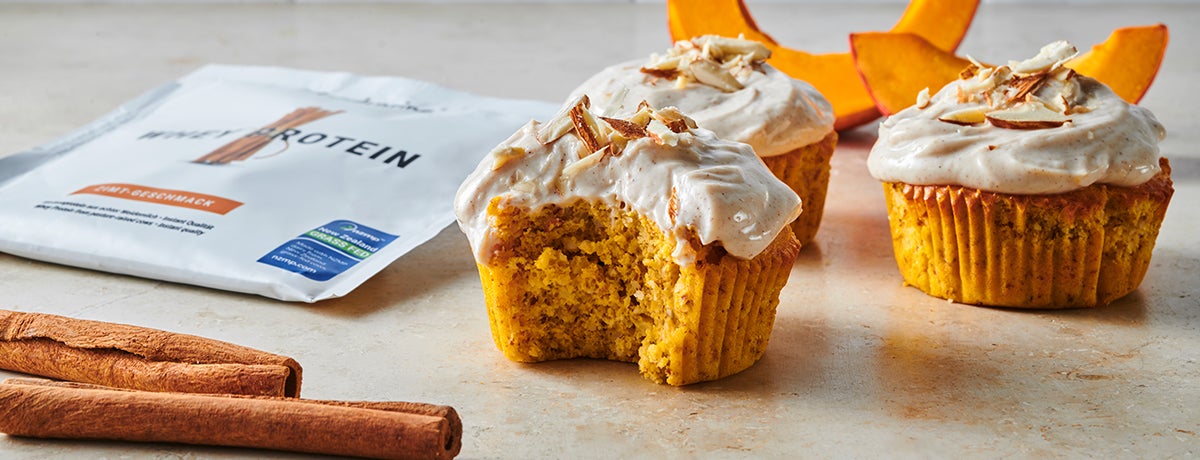
Baked Pumpkin Salad
Because pumpkins are super satisfying and full of important nutrients, they’re an excellent addition to leafy green salads. Spiced and baked, they’ll be the perfect accompaniment to all that crisp, freshness.
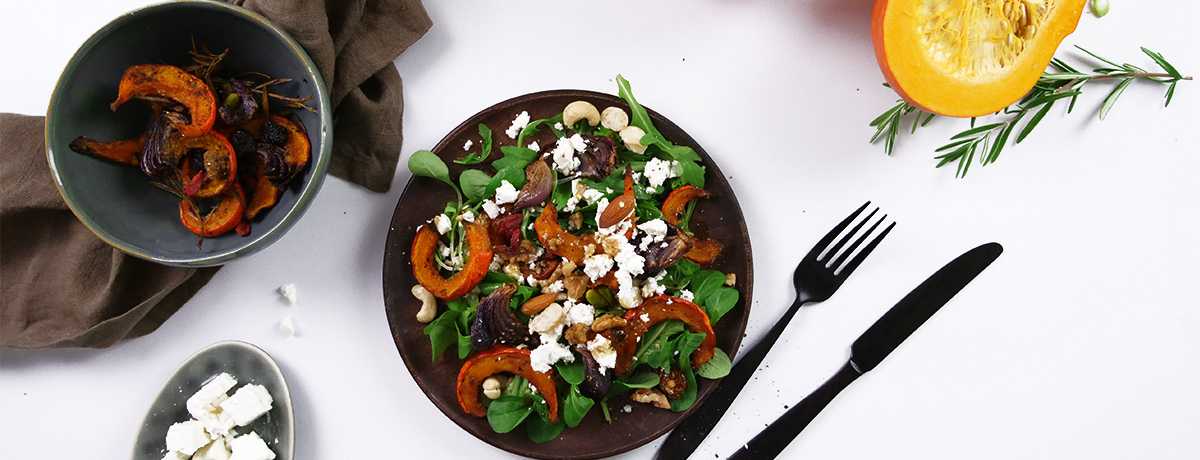
Vegan Pumpkin Soup
Nothing is better for a cozy fall soup than pureed pumpkin. Sweet and savory, it’ll knock out all your cravings and warm you up, too.
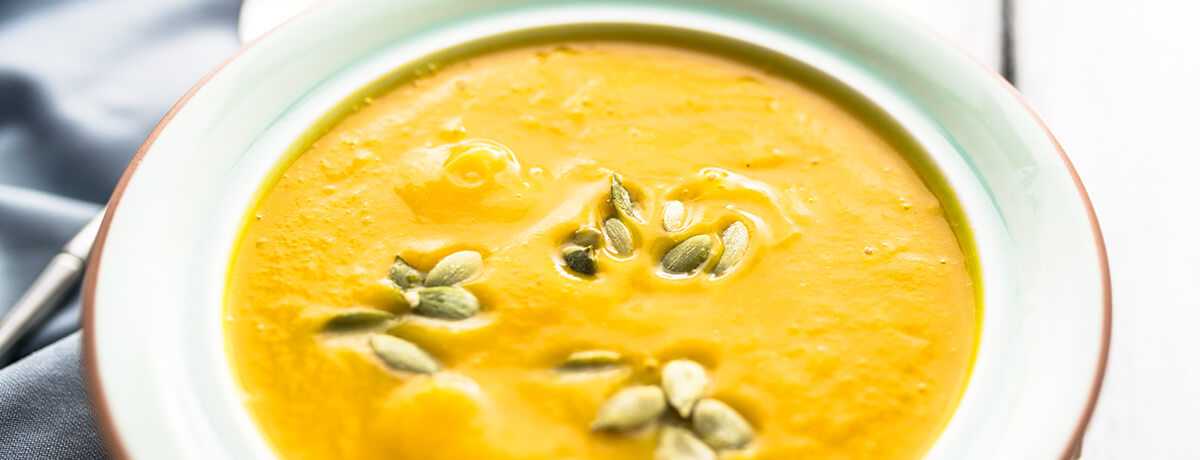
Pumpkin Chocolate Chip Cookies
Need a little sweetness to fight that afternoon slump? Try our pumpkin chocolate chip cookies. A bit of peanut butter perfectly complements the nuttiness of the fruit. And they hardly take any time to whip up!
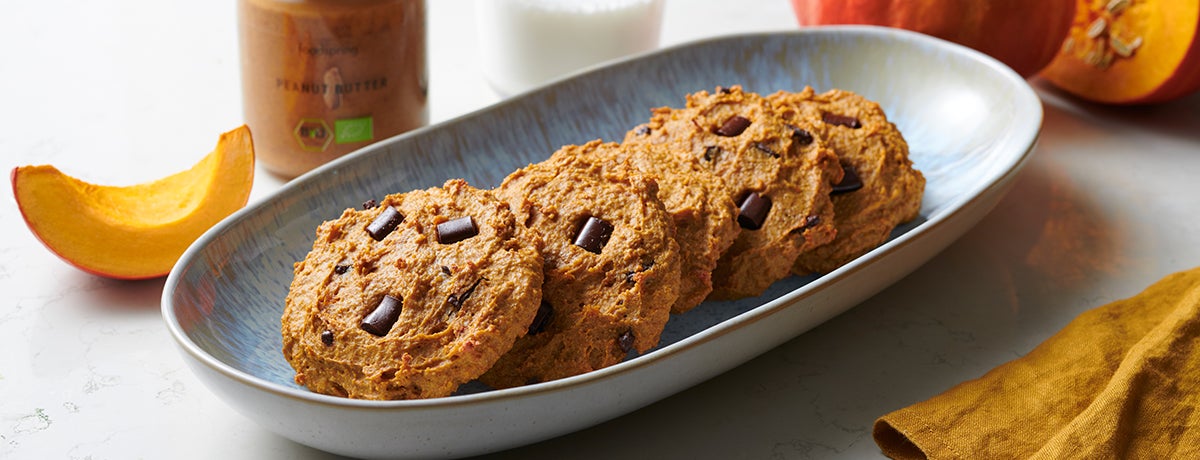
Pumpkin: Our Conclusion
- Squash is technically a fruit and it’s in season between September and November.
- There are more than 800 varieties of squash, and some of the most popular options include Hokkaido, butternut, and pumpkin.
- Pumpkins have a sweet and nutty flavor.
- Pumpkins are very filling and particularly rich in vitamin A and potassium.
- They can be cooked on the stove or in the oven.
- They are most often made into soup, purée or sauce
- Squash seeds and pumpkin seed oil are considered sources of healthy fats.
* Vitamin A contributes to the maintenance of mucous membranes. Vitamin A contributes to eye health. The claim may only be used for foods that comply with the minimum requirements for a source of vitamin A as set out in the claim [NAME OF VITAMIN(S)] AND/OR [NAME OF MINERAL(S)] SOURCE in the Annex to Regulation (EC) No 1924/2006.
** Potassium contributes to normal muscle function. The claim may only be used for foods that comply with the minimum requirements for a source of potassium as set out in the claim [NAME OF VITAMIN(S)] AND/OR [NAME OF MINERAL SUBSTANCE(S)] SOURCE in the Annex to Regulation (EC) No 1924/2006.
Sources for this article
We at foodspring use only high-quality sources, including peer-reviewed studies, to support the facts within our articles. Read our editorial policy to learn more about how we fact-check and keep our content accurate, reliable, and trustworthy.
- Verordnung (EU) Nr. 432/2012


























